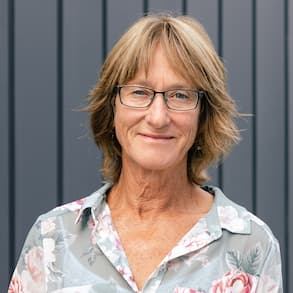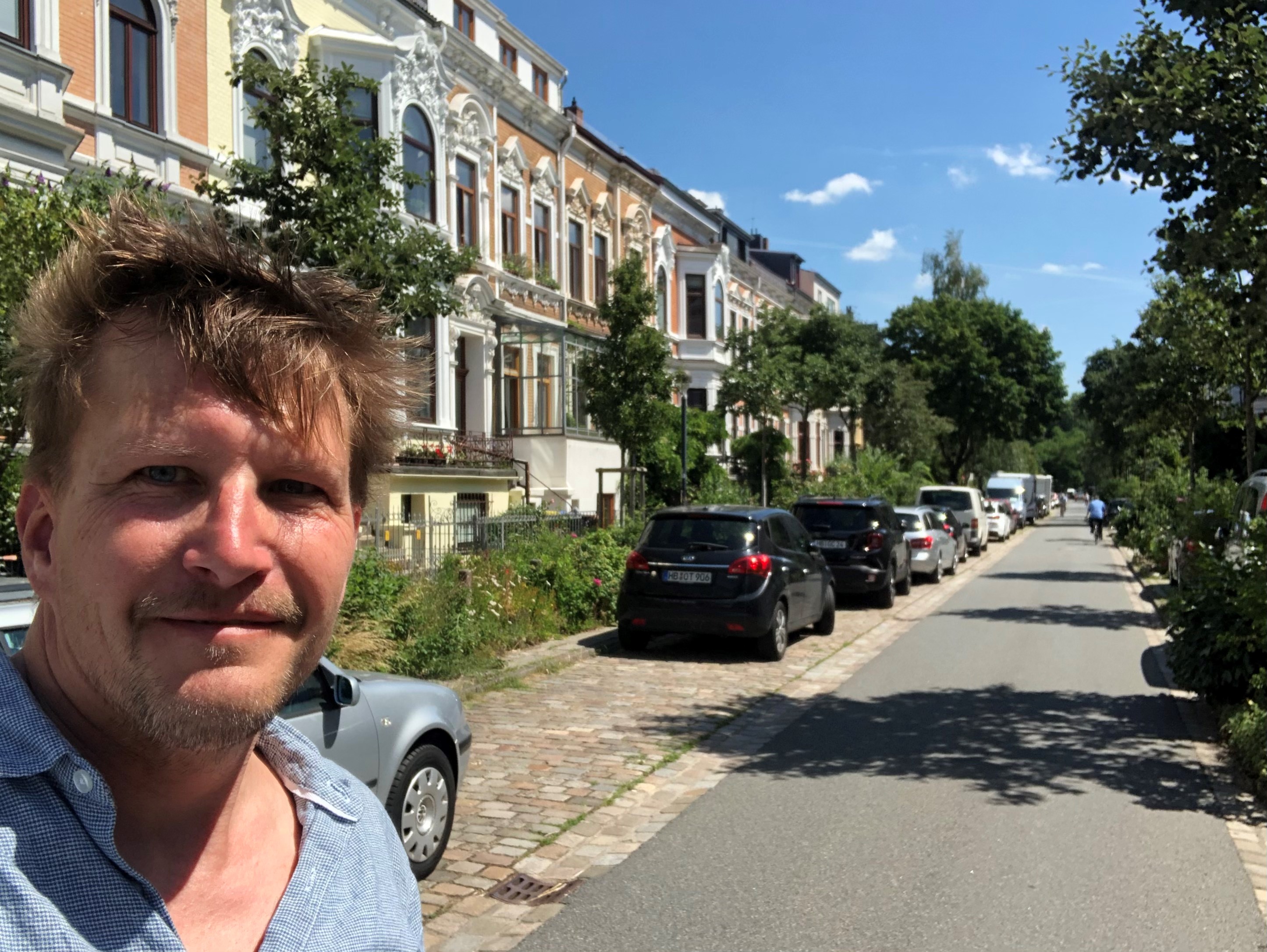Medium-density housing model debated


Timo Neubauer on a street in Bremen, Germany, similar to the housing model he says could work in Tasman. Photo: Supplied.
A Tasman urban designer says the Nelson-Tasman region has one of the most unaffordable housing markets in the country and needs a better model for intensification similar to the two or three-storied neighbourhoods in Europe.
Timo Neubauer is visiting Europe and admits the concept that he shared on social media has been met with “angst and preconception” from people vehemently opposed to intensification on that scale. But he has also had positive feedback from people seeking a more creative approach.
He says New Zealand’s intensified housing is not resilient, provides minimal amenities and is too expensive, and he understands why some people view them negatively.
Instead, he suggests medium-density neighbourhoods of attached townhouses that have amenities such as street trees, parking, gardens and generous green spaces, outlook and privacy. He says it works overseas and there is no reason it should not work in New Zealand.
In the past, greenfield land has been used for development in New Zealand, including locally, in a bid to provide enough housing to meet demand which has led to little centrally-located housing and pushes property prices up, he says.
People with the least money are pushed to the periphery, he says, where they are now landed with the increased burden of high petrol prices for their longer, daily commutes.
“This approach is also extremely land hungry, turning natural and productive land into seas of concrete and roofscapes.”
He says those developments are very resource-intensive and known to increase greenhouse gas emissions at construction as well as through heating and cooling requirements, plus transport.
It also bleeds out the town centres so there are not enough residents to support commercial activities. Private investment is diverted to new fringe suburbs, leaving centres run down and tired.
Instead, he says his urban regeneration approach has well-designed terrace or townhouse developments closer to services where people can walk, cycle or use public transport that in turn leads to less car dependency and less road congestion.
“Being able to house more people in areas that are already urban, we would reduce the need for greenfield developments eating into our natural and productive land.
“Having more residents in our town centres would benefit businesses through increased footfall and simply make our centres more attractive.”
Done right, he says the housing could provide both larger houses in the development for those who could afford them as well as social housing without the risk of stigmatisation.
When he posted his housing model on social media, with photos of attached European housing, many were horrified at the concept in their town.
While others had lived in similar housing overseas and enjoyed lively, attractive neighbourhoods.

Episode 11 - living locally and working globally — The Nelson Pod
Timo says medium-density housing as he suggests is only ever going to be part of the overall housing in a town and people can still chose where they want to live.
But it provides the option of affordable housing with better amenities than the common approach of “cramming people in for maximum profit”.
He says it is not a matter of whether New Zealanders are ready for his proposal, or similar, as global conditions will force change.
“We have to reduce our emissions, we have to reduce the amount of our incomes that we pay to international oil companies, we have to provide options for our most vulnerable.”
JTB Architects’ senior architect Nathan Edmondston supports Timo’s vision for medium-density closer to the centre of towns and cities with the amenities that make them more appealing.
“Long term, cities can’t continue to grow. They need to be more dense (sic), with people living closer to the centre of the city.
“A lot of the developments that are done are not done well and people look back on them as their reference points – rather than what is done overseas and trying to bring that to New Zealand.”
The amenities provide the “feel” that people want in medium-density housing and he says it is often those amenities that are dropped from New Zealand developments.
“I think as you get more, it will quickly snowball,” Nathan says.
